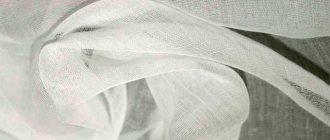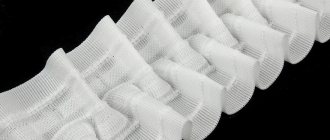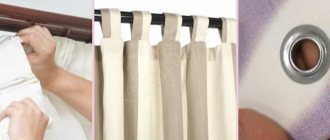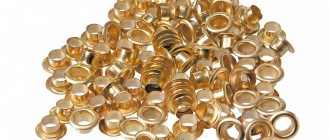How often should you wash tulle?
Let's not rush into washing curtains and let's see what factors determine the frequency of this procedure:
- The nature of the room. Agree, the curtain on the window in the kitchen gets dirty much faster than the curtain from the bedroom. If this is a children's room, then do not forget that the dust that collects on the window drapery may contain various microorganisms and fungal spores, and this does not really help strengthen your child's immunity.
- Environment. The quality of life in the forest near the lake is strikingly different from urban conditions. Moreover, if there is an industrial zone or highway near the house. The dirtier the environment around your home, the more and faster dust accumulates not only in the curtains, but throughout the entire house. In such an environment, it is necessary to wash tulle and wet clean the room as often as possible.
- Number of residents. Here we include not only adults and children, but also the animal fauna living in the apartment. Pets do not make curtains look clean.
- Old tulle is washed more often than new tulle.
The tulle is washed as it becomes dirty.
Thus, no matter how much we care about the cleanliness of our home, washing tulle is necessary at least once every six months.
How to choose a detergent
The fabric of the curtains is light, so the amount of detergent is reduced by 2 times. When washing in a machine, run the rinse program 2 times to completely remove chemical residues.
Detergents by fabric type
To wash expensive curtains, purchase modern curtain detergents with reduced foaming that do not contain phosphates.
Shampoos and gels for delicate washing
Suitable for organza, nylon, cotton, muslin, veil.
Baby powders and gels
Suitable for all types of tulle.
Regular powders
Suitable for products made of organza, cotton, nylon.
Silk balm
Silk tulle cannot be washed with regular powder. Enzymes and alkalis affect the structure of the fibers. For delicate fabrics, liquid products that are marked for silk and wool are suitable.
Popular choice
Experienced housewives choose the most reliable washing powders and gels.
"Cashmere Elixir" for tulle and curtains
Powder for delicate fabrics (artificial, natural) removes traces of soot, soot, nicotine, and fat. Contains silicones. They prevent wrinkles from forming. The powder is intended for all types of washing, white and colored curtains.
"Vorsinka"
Use gel or powder. The product is suitable for nylon, chiffon, silk, lace fabric.
"Bingo Tulle"
Turkish powder contains oxygen bleach. Used for hand washing curtains and tulle.
Clovin Clever gardinen
Hand wash white curtains made of any fabric. The powder removes grease stains, traces of soot, soot, eliminates unpleasant odors, and restores whiteness.
How to wash tulle in a washing machine
Updating window drapery today is not the cheapest pleasure; washing is a less expensive option, especially if you have an automatic washing machine. But in order not to spoil expensive curtains, to maintain the freshness of their colors or, on the contrary, snowy whiteness, you will need some little tricks.
The most accessible remedy is Whiteness.
Preparation
Before washing tulle in an automatic washing machine, we will carry out preparatory measures. First, carefully remove the curtain from the curtain rod so as not to spread the dust that has accumulated over a long period of time throughout the apartment. We go outside and shake it out well; it’s easier to do this together.
Soak the tulle for a couple of hours in warm (no more than 30-40 degrees) water with a small amount of detergent.
Next, the soaking procedure, don’t be alarmed, tulle tolerates it perfectly. To do this, immerse the curtain in a container with warm water and leave it for a while. After the water has completely cooled and becomes cloudy due to the released dirt, wring out the fabric with your hands, drain the dirty water and proceed to machine washing.
The tulle can be washed in a washing machine.
In principle, the soaking step can be skipped if the fabric is not heavily soiled. But you should remember that not all stains can be washed out in the machine, so here are some recommendations for pre-soaking:
- Tulle curtains from kitchen windows should be soaked for several hours, adding soda to warm water, and then rinsed;
- Sprinkle grease stains with starch and leave for 5-7 minutes, then rinse off the starch and wash the stained areas with laundry soap or oxygen bleach;
- To remove yellowness, it is best to soak tulle in warm, salted water, a tablespoon of table salt per liter of water. Soak for at least three hours. After that, rinse and put in the washing machine.
In some cases, household chemicals can be replaced with starch.
Selecting mode and temperature
The materials that make up the fabric determine at what temperature and mode the tulle should be washed. Therefore, if the material from which the curtains are made is known, then washing efficiency, without damaging the fabric structure, is guaranteed.
Usually all washing modes are described in the instructions for the washing machine.
At what temperature should you wash tulle:
- 30 degrees, optimal water temperature, suitable for materials such as nylon, organza, chiffon and muslin;
- temperature conditions up to 60 degrees – for cotton and polyester;
- fabrics made from mixed fibers, which include both natural and synthetic materials, will feel good at temperatures of 40-60 degrees.
As you can see, mixed fabrics, for example, nylon or polyester, are the most unpretentious in terms of temperature choice, but, nevertheless, they wash worse at 30 degrees. As for machine washing, tulles of all types and materials require the most careful handling.
Delicate fabrics should be washed on a delicate cycle.
Therefore, before starting the machine, select a delicate wash program and a low spin mode.
Washing process
After all the preliminary manipulations, soaking, washing, studying the composition of the tulle, we proceed to washing. Place the curtains in the drum of the machine and close the door tightly.
Use high-quality tulle washing products.
But first, some practical recommendations:
- To prevent mechanical damage to the fabric, it is best to wash the tulle in a special cover for gentle washing. There is no cover, use a pillowcase, the effect will be the same;
- When placing in a bag, carefully roll the fabric to avoid severe bruises and folds after washing;
- We set the temperature according to the type of fabric (cotton, synthetic, mixed fabric)
- The machine spin should be gentle, maximum five hundred revolutions;
- We use a mild washing powder.
- Start the wash cycle on delicate cycle. Some models of washing machines are equipped with a “No Crease” mode, which is suitable for tulle.
To return the tulle to its snow-white color, when washing you need to add a special bleach for synthetic fabrics.
Tulle should be machine washed using a mild detergent.
Carefully read the instructions for its use, since excess chlorine-containing substances can cause irreparable damage to your curtains. With less risk, you can use oxygen powder, which is quite effective in whitening.
Drying rules
In order for curtains made of tulle fabrics to last as long as possible, they require careful treatment and systematic care. The main enemy of tulle is washing, but it can be avoided only in one case, by replacing the curtains with new ones every year. Few of the thrifty owners are ready to take such a step, so to maintain freshness, the drapery will have to be washed at least twice a year.
After finishing washing, shake the tulle slightly without squeezing, otherwise creases will remain.
The greatest wear of fabric during washing occurs during spinning, the conclusion is that you should spin the drum at minimum speed, or better not spin it at all. After washing without spinning, the tulle will need to be dried. You can cope with this task without much difficulty by adhering to the following recommendations:
- remove the washed tulle from the laundry bag and hang it over the bathtub, let the remaining water drain;
- The drying process will speed up if the curtains are placed in a well-ventilated area, avoiding direct sunlight;
- Never use household heaters or hair dryers for drying.
If the fabric is not very wrinkled, hang it directly on the curtain rod.
If after drying there are still folds on the canvas and the fabric is not completely straightened out, it doesn’t matter.
Hang it on the ledge and lightly moisten it with a spray bottle. After some time, the tulle will smooth out under its own weight and restore its previous appearance.
Starching tulle
Lush folds create a solemn atmosphere. But in order for the airy fabric to keep its shape well , you need to know how to starch tulle correctly . This will make the curtains thicker, they will not wrinkle so much. When dry, starched products are covered with a film that traps dust, dirt is not absorbed deep into the material and is easier to wash.
Preparation of the solution. A tablespoon of starch (potato or corn) is diluted in a glass of cold water. Then the solution is poured into 250 ml of boiling water in a thin stream, stirring constantly. Boil the product for 2 minutes until a homogeneous, transparent mixture is obtained. Before use, starch must be cooled and lumps removed.- The tulle is sprayed with a soft solution, straightening each area well. The damp fabric must be ironed so that it keeps its beautiful shape for a long time.
- Using special means, starching can be done in the washing machine. The prepared solution is poured into the rinse aid compartment; after washing, the container is washed out with running water.
You can starch linen and cotton tulle. Synthetics and silk products are not processed in this way.
Special detergents
The most effective for high-quality and safe washing of curtains will be special care products for tulle and curtains. They are present in sufficient quantity and variety in stores on shelves with household chemicals. Such products efficiently clean fabrics from various types of contaminants, in addition, they have a mild bleaching effect and light starching.
Use quality cleaning products.
But, if special products are not at hand in time, you can use ordinary washing powders. So, for tulle made of nylon, organza or cotton, powder for automatic washing with bleaching is suitable. Before using such a powder, be sure to read the instructions for use of the product.
Vanish is a popular stain remover.
Washing powders or gels for children's clothing work well with stains of various natures, and they do not cause allergies. Voile, silk and other lightweight fabrics can be washed effectively in warm water using shampoos designed for delicate materials. The advantage of such shampoos is their easy rinsing.
What products are especially recommended for use?
Gel TORTILLA Eco for tulle and curtains 0.5 l. The composition of the product for machine and hand washing of curtains of all types includes amphoteric, anionic and nonionic surfactants, soap, optical brightener and other substances. The gel is highly effective and environmentally safe. It perfectly washes the most stubborn stains, eliminates stains regardless of their intensity and origin, and neutralizes odors.
Sama, 1500 g, laundry detergent, for white items . According to the manufacturer, regular use of this detergent helps to protect fabrics from the appearance of unsightly shades - yellow or gray. The gel contains enzymes and optical brightener. It can be used to wash tulle made from synthetic or natural fibers.
Detergent for delicate washing “Care + Restoration” Perwoll 1800 ml. Provides the material with long-term protection against fading and contamination. The whole secret is in the special formula. The composition includes anionic and nonionic surfactants, phosphonates and enzymes, as well as compounds that have the property of partially restoring damaged fibers. If you regularly wash Perwoll tulle, it will retain its original appearance for a long time!
Folk remedies for washing
Over time, as well as from frequent washing, any fabric loses its luster and novelty. To whiten tulle it is not necessary to resort to special bleaches and products for delicate fabrics. There are many folk tricks that will help restore the snow-whiteness of airy curtains. To achieve the desired effect we will need:
- salt, table salt;
- alcohol solution of brilliant green;
- blue for any type of linen.
We often encounter yellowing of tulle, this especially often happens with a curtain in the kitchen or if people often smoke in the room. To bleach such a curtain, you need to prepare a solution of table salt and soak the tulle in it for 2-3 hours. For high-quality bleaching, you will need a strong solution, 30 grams of salt per 0.5-0.7 liters of warm water.
Tulle and curtains must be rinsed thoroughly.
Next method. Dissolve 10-12 drops of brilliant green in a glass of warm water and pour it into a bowl of water, about 10 liters. Place the washed tulle in a basin for 5-7 minutes, then rinse thoroughly.
When bleaching with blue, the main thing is not to overdo it; half a tablespoon per ten liters of water is enough. Stir the solution thoroughly and rinse the pre-washed tulle in it.
How to Treat Stains Before Machine Washing
If various stains (grease, blood, wine, etc.) appear on the tulle curtains, they should be pre-treated before washing in the machine. You can use an industrial stain remover or apply one of the folk remedies to the stained areas, leaving for half an hour:
- hydrogen peroxide;
- a paste of soda and salt;
- concentrated solution of citric acid (1 tsp powder per 2 tbsp water);
- ammonia;
- vinegar.
You can soap the dirty area of the curtain with laundry soap - it removes stains of various origins well.
Manual washing method
Many people, in order to reduce the risk of damage to a minimum when caring for delicate fabrics, prefer machine washing to hand washing. Conventionally, washing by hand can be divided into several main stages:
- To soften dirt on the fabric, we pre-soak it. Place the tulle in a basin with water heated to 40 degrees and leave for up to three hours. To enhance the cleansing effect, you can add a small amount of soda or salt to the water. After soaking, lightly wring out the tulle and rinse.
- For washing, we will use the same basin, having previously replaced the water. Add washing powder or other suitable product and follow the instructions on the package. To increase washing efficiency and reduce the risk of ruining the fabric, you can add a little vinegar to the water. Remember, tulle loves gentle handling, so do not rub it vigorously and twist it when squeezing, it is better to let the water drain on its own.
- The final stage of hand washing is rinsing. Careful splashing with the addition of blue will return the tulle to freshness and shine.
Hand washing is especially delicate.
Machine washable
For owners of advanced modern washing machines, it is enough to turn on the special “for curtains”, “delicate” or “silk” mode and any curtain will be washed carefully.
How to properly wash tulle in a washing machine? For regular automatic models, use the “hand wash” mode at a temperature of 30 degrees. There are several recommendations for proper machine washing:
By the way, the “wool” mode is great for curtains and tulle, so you can wash and preserve the fabric as carefully as possible.
- How to wash tulle from grayness? Pre-soak it for several hours or overnight in water, adding salt (1 tbsp) and powder;
Salted water is also perfect for colored fabrics, this will make the curtains brighter.
- Fold the tulle fabric inside the drum neatly and evenly, no need to crumple it, so the number of folds will be minimal. It is best to place the tulle in a special case to preserve the integrity of the fabric and protect it from accidental damage in the drum;
- Wring out the washed item at very low speeds (400-500), otherwise the curtain may turn into a crumpled lump;
- Choose the temperature depending on the composition of the material, but not higher than 40 degrees;
- Replace the dry powder with liquid gel or shampoo, add a very small amount, half the usual volume. For curtains, foaming should be as low as possible.
When the tulle wash is complete, you can turn on the extra rinse cycle to thoroughly remove the detergent.
Rules for washing tulle from different types of fabric
A lot of time has passed since the birth of a fabric called tulle. Today this name is rather a collective one. It refers to various delicate fabrics woven from both natural and synthetic fibers. To properly care for such fabric, you first need to decide on its composition, the method of weaving the fibers and the features of the surface pattern.
Capron
This is a fragile and delicate synthetic fabric that requires very delicate handling. Types of fabric differ in the way the threads are woven and the degree of transparency. Washing nylon should begin with soaking for about half an hour. To do this, use water at room temperature with the addition of a small amount of detergent.
Nylon is made from polyamide fibers.
It would be more correct to use products that do not contain alkali and active bleaching additives. It should be washed carefully, with gentle movements, without stretching the nylon tulle. Afterwards, lightly squeeze and rinse in cold water. It is unacceptable to unscrew the nylon; we hang it over the bathtub and wait for the remaining water to drain. Machine wash on a delicate cycle at a temperature not exceeding 30 degrees.
Organza
The fabric is produced by tightly weaving silk, viscose or synthetic fibers, due to which it becomes rigid and retains its shape well. Transparent and airy organza practically does not wrinkle and repels dust. The surface may contain prints, embroidery or jacquard inserts. Despite all the advantages, organza remains quite capricious and, if done incorrectly, it may leave streaks or white spots on it.
Organza is a popular fabric for tulle.
Therefore, to wash such tulle you will need products with a low foaming effect, for example, gels or delicate care products. On average, one tablespoon of product per ten liters of water is consumed per wash. The temperature should not exceed 30-35 degrees. Before washing, organza must be rinsed with cold water to remove lint and dust, thereby preventing them from sticking to the fibers at a higher temperature.
Veil
Textiles with a soft, fine texture of plain weaving fibers. To make a veil, cotton, linen, silk or synthetic raw materials are used. Easily folds and smooths out well. The veil is produced bleached, with the possibility of applying a pattern or coloring. It is undemanding in care; hand washing or machine washing with a gentle spin and drying mode is sufficient.
Tulle is made from various materials and is very easy to care for.
But first, the veil tulle must be soaked in cold water with a small amount of mild detergent. It is best to wash the veil by hand using liquid products, such as curtain shampoo.
Please note that when washing such tulle, a copious amount of foam is formed, so add shampoo sparingly. The fabric should not be wringed out to avoid wrinkles. Machine washable for synthetic veils.
Washing rules
The water temperature and washing method (hand, machine) depend on the structure and composition of the fabric fibers. Tulle curtains are made from different materials:
- mixed fabrics;
- polyester;
- cotton;
- nylon;
- organza;
- veils;
- chiffon;
- muslin.
Mode
On the machine, the machine selects a delicate wash program (“Wool”, “Silk”, “Hand Wash”) with a maximum temperature of 30 °C. The spin function is not used.
Temperature
Factory-made curtains have a tag indicating the recommended water temperature. It’s more difficult with products sewn in a workshop or with your own hands. You need to visually determine the type of material and select the desired water temperature.
| Material | Temperature (°C) |
| Cotton | 40-60 |
| Polyester | |
| Blended fabric | |
| Capron | 30 |
| Veil | |
| Organza | |
| Kiseya | |
| Chiffon |
Using bleach
Products made of nylon and polyester are restored to their whiteness not with bleach, but with improvised means:
- blue;
- saline solution;
- ammonia;
- brilliant green.
For curtains made from other materials, bleaching agents containing hydrogen peroxide are suitable:
- "Sail";
- Vanish;
- "Persol";
- Belle;
- "Velvet".
The snow-white color of the fabric is restored with the preparations “Ace”, “Bos Plus”, Beckmann. They contain fluorescent substances. They reflect light off the surface, making the tulle appear whiter.
How often do you need to wash?
According to doctors, tulle should be washed every 2-3 months. Dust settles on the airy part of the interior, mites and other harmful microorganisms grow in it, causing allergies.
Kitchen curtains get dirty more often than others; they are advised to be washed once a month.
How to wash without needing to iron
Curtains are not twisted to prevent wrinkles from appearing on thin fabric. After rinsing, the fabric is taken out of the water and hung over the bathtub (basin). Shake the tulle well, when the water has drained, hang it straightened on hooks.
How to bleach tulle
The longer tulle decorates our windows, the more, over time, it fades, acquiring a yellowish tint. The task of washing is to return the tulle to its snow-white appearance. A simple solution is to use bleach. This affordable household chemical product is presented in the form of various powders, liquids or gels. Bleach can be used both at the soaking stage and directly during washing. Whitening curtains can be an independent step.
The tulle is boiled carefully.
At the end of washing, but before rinsing, the fabric is briefly immersed in a container with a bleach solution. The bleaching agent is selected taking into account the composition of the fabric, but it definitely should not contain chlorine, which will not completely ruin the appearance of the tulle. Chlorine-containing products do an excellent job of bleaching and at the same time destroy fibers.
Bleach will help whiten the tulle.
To solve our problem, preparations with active oxygen are best suited. They are distinguished by their mild action, while doing an excellent job of whitening. It is important to use detergents strictly following the manufacturer's instructions.
How to achieve results
To improve the appearance of the product, change the shade to a lighter one, you must follow the instructions:
- The tulle needs to be shaken out of dust.
- When choosing a washing method, take into account the properties of the curtain material. Based on this information, it is determined whether the product needs to be pre-soaked (by hand or in a machine). This measure will allow you to quickly get rid of grayness. Apply a solution with salt.
- A cover for the curtain is prepared (when necessary, depending on the type of fabric).
- If you plan to soak the tulle in the machine, you need to pour bleach into a special compartment. At the same time, pour the powder into another compartment. Set the basic parameters of the machine, after which you can turn it on.
- Rinse is included in the washing program. If necessary, start another cycle after finishing the machine. This is done when a large amount of detergent has been used.
- Spinning is not performed; for cotton fabrics, the speed is set to no more than 400 rpm. (if the characteristics of the washing machine allow).
The clean and white curtain should be returned to its place - on the window. It may be damp at this stage, which is an advantage as you won't have to iron it. The product will expand under its own weight.
How to remove difficult stains
If stains are found on the tulle, they are removed by washing. Fat deposits are easily removed with dishwashing gel or laundry soap. We treat the stain with one of these products and soak the curtain for a couple of hours in warm water, up to 40 degrees. After time has passed, we re-treat the area, scrub and rinse.
Laundry soap is a simple and affordable product.
An ammonia aqueous solution will help remove old stains. To do this, mix glycerin and ammonia one to one, and wet the stain with the resulting liquid. We start processing from the edge, gradually moving towards the center. After waiting a few minutes, we proceed to machine wash. A mixture of vinegar and ammonia is prepared in a similar way; it is also carefully rubbed into the contaminated area, after which the tulle is washed.
Removing difficult stains at home
The air contains dust, soot, and other substances. They settle on the fibers of the fabric, changing color and forming stains. Grease stains appear on kitchen curtains. Complex stains are removed using improvised means.
Fat
Splashes of fat during cooking fall on the tulle. They do not disappear after regular washing. Therefore, fabric covered with greasy stains is first treated with improvised means, then washed.
Salt
Prepare a solution: 5 liters of water, 500 g of salt. Soak the curtain for 1.5 hours. After that they wash it.
Peroxide
Peroxide removes greasy stains on light-colored fabrics. It is added to the soaking water - 2 tbsp. l/l. Treatment with the solution lasts 1.5 hours. After this, the tulle is washed.
Ammonia
An old greasy stain is removed with a mixture of ammonia, fine table salt and table vinegar. Proportions:
- ammonia - 50 ml;
- salt - 1 tbsp. l.;
- 9% vinegar - 1 tbsp. l.
The resulting paste is applied to the grease marks. After 15 minutes, shake it off. The item is sent for washing.
Laundry soap
Lukewarm water (25-30 °C) is poured into the basin (bath). Grate 72% laundry soap. The shavings are dissolved to form a soap solution. Soak the curtain in it for 3 hours. Rinse. The water is changed 3-4 times.
Dishwashing liquid
Take any colorless dishwashing gel. Apply it to greasy stains. Wash after 1.5 hours.
Table vinegar
Prepare a concentrated solution - 1 part 6-9% vinegar, 1 part water. Soak the stain in it. Rinse under the tap when the fabric is completely dry.
Soot and soot
In winter, curtains become covered with soot. Their whiteness is returned in a simple way:
- remove from curtains;
- shake out dust;
- soak overnight in a solution of baking soda (2 tablespoons), dishwashing gel and warm water.
In the morning they are thoroughly rinsed, squeezed, and dried.
Rust
Small rusty stains can be removed with toothpaste. It is squeezed onto the yellow-brown spot and washed off after 24 hours. For severe contamination, take 250 ml of boiling water, 1 tsp. citric acid, stir until all crystals dissolve. Soak the stains in the solution. After a few minutes, the tulle is rinsed. Add a little soda to the water. It neutralizes acid.
Do I need to iron tulle after washing?
It all depends on the composition of the fabric from which the tulle is made. Curtains made from natural fibers almost always straighten on their own after washing. It is enough to return them to the cornice after preliminary drying, and after a while the tulle will return to its shape. Most tulles are made from high-quality synthetic materials, they also easily return to their original shape and do not require ironing.
Modern washing machines allow you to wash tulle without the risk of damage.
However, often, artificial fabric comes out of the wash slightly wrinkled and requires light heat treatment to return to its original appearance. To iron a curtain on a board, you will need a soft lining, for example, gauze; maintain the iron temperature from 100 to 120 degrees. Movements on the surface of the fabric should be smooth, without jerking.
Each type of fabric should be ironed according to individual requirements.
Long curtains are easier to iron while hanging. For this purpose, steamers or steam generators are used, which can be used in vertical mode. Such a device is capable of not only straightening wrinkles, but also cleaning from light stains, thereby increasing the time from wash to wash.
Ironing curtains
Most types of fabric straighten out on their own when dry, but there are materials that must be ironed. These include:
- Synthetic tulle. It is ironed wet from the wrong side and through a cotton diaper. The temperature should be 120 °C.
- Organza. The completely dried material is ironed through silk paper. Hanging tulle cannot be treated with steam. This will cause waves to form.
- Cotton. The curtain is ironed using a damp gauze cloth at the minimum temperature setting.
With proper care, thin tulle will retain its original appearance and will delight you for a long time with its bright colors and pleasant texture.
Originally posted 2018-04-18 09:15:44.
General care rules
To make window drapery pleasing to the eye for as long as possible, at least until you get tired of it, you should follow simple rules for caring for curtains:
- Regular ventilation, with the windows wide open for 1-2 hours, will clean the fabric from a significant amount of dust and refresh not only the curtains, but also the room.
- Vacuum cleaner. Using nozzles for textile products, clean the surface of the curtains from dust.
- Steam is an excellent solution to the problem of cleaning dirt and restoring the freshness of tulle.
- Regular wet cleaning of the premises. The less dust there is in the apartment, the less it accumulates on the curtains.
- Frequently clean the curtain rods and drapery fastenings from accumulated dust.
- Do not forget that thin and delicate tulle is extremely susceptible to intense mechanical stress during washing.
It is impossible to imagine a cozy home without light and airy tulle on the windows.
Tulle curtains, made from different materials, differ not only in their structure, but also in their care features, which, upon closer examination, are not so complicated. With the right approach to solving the problem, using available means, tulle can create comfort in your home for a long time.
Whitening with soda
This is a very simple and affordable method, since every housewife has soda. Thanks to soda, you can whiten gray and yellowed tulle and remove greasy stains.
Here is the simplest recipe with this remedy:
- mix 100 g of any powder and two tablespoons of soda;
- pour this mixture into a bowl of warm water and stir;
- dip the tulle in this solution for half an hour;
- then wash by hand or machine.
Please note that baking soda only washes effectively when soaked!
Additional recommendations
When washing tulle it is recommended:
- Before starting the procedure, soak the material in a solution of 1 tbsp. l. salt and 5 liters of water. This product will help restore the whiteness of materials for which bleaches are contraindicated.
- Avoid twisting curtains.
- Do not set the temperature higher than recommended. Because of this, the material deteriorates, and the yellowness eats deeper into the structure of the fabric.
- Soak heavily soiled curtains in cold water with a diluted tablespoon of vinegar.
- Do not put tulle or other things into the drum.
- Wash tulle with dyes using products intended for colored fabrics.
In addition, when washing, you need to take into account the presence of embroidery, hooks and other decorative elements on the curtains.
Rules for drying and ironing
Ironing tulle also needs to take into account the type of material:
- Cotton - through a rag from the wrong side, setting the minimum temperature.
- Flax - through gauze at a temperature of 100 degrees.
- Synthetics - through fabric when wet at 120 degrees or less.
- Viscose - from the inside out, using the steam mode on the iron.
- Organza and silk - through paper at minimum temperature.
- Nylon - wet at 110 degrees.
After washing, the tulle must be immediately hung over the bathtub. Then, when the fabric is dry (but still retains moisture), the curtains are moved to a naturally air-conditioned room. If folds are revealed when examining the tulle, the material must be smoothed out by hand. If necessary, the fabric can be re-moistened with a spray bottle.
How to wash tulle without wrinkles
To prevent the tulle from becoming wrinkled after washing, you need to set the appropriate mode on the machine. The type of program is selected taking into account the manufacturer’s recommendations specified in the instructions. Washing the tulle in a special bag also helps to achieve this result.
How to machine wash tulle with hooks
You can wash tulle with hooks in a machine only in a special bag. In this case, it is recommended to choose a delicate mode and a temperature not higher than 30 degrees. You should avoid pressing material with decorative elements.
Tulle is washed according to the same rules as many other things. The difference is that it is recommended to first soak the curtains in cold water, thus removing surface dirt. The material is then machine washed using conventional powders and suitable stain removers without aggressive ingredients.
Types of curtains
When choosing a mode, one of the decisive parameters is at what temperature to wash the tulle. For most curtains, it is recommended to select a delicate washing mode, which involves a temperature no higher than 30, less often 40 degrees, smoother rotation of the drum, and abundant use of water.
Roller blinds
Many people wonder whether roller blinds can be washed, whether roller blinds can be cleaned, and how to properly remove roller blinds for washing. By following the rules, you can clean curtains with detergents created specifically for such curtains.
Roman curtains
In addition, many people ask about how to care for roller blinds and how to wash Roman blinds. Washing Roman blinds should be gentle.
Such curtains require careful, daily care. How to wash Roman blinds at home? They need to be soaked in a warm soapy solution without various additives. Such curtains cannot be bleached.
How to wash blackout curtains in a washing machine? What products can be used for such curtains. To wash curtains, you can use detergent for synthetic fabrics. In addition, you can use regular laundry soap to clean curtains.











